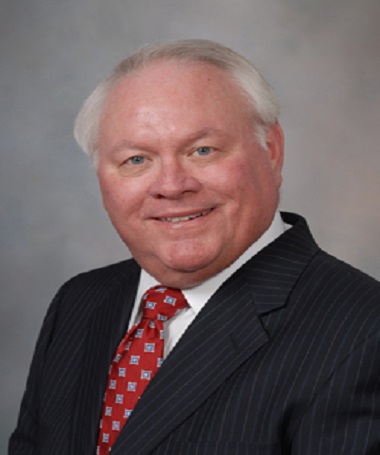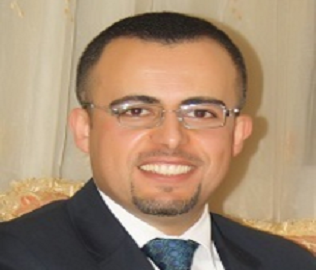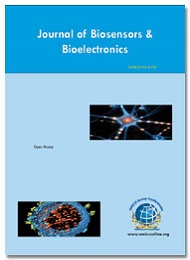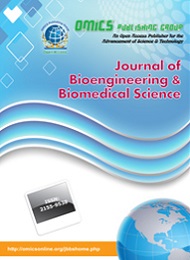Theme:
Biomedical 2017
Track 1: Biomedical Engineering
Biomedical engineering is the implication of engineering theories and concepts to medicine and biology for therapeutic and diagnostic purposes. This is apparent in healthcare and different technologies like stem cell engineering and the 3-D printing of biological organs.
Related Societies and Associations:
Canada - Atlantic Canada Clinical Engineering Society, International Federation for Medical and Biological Engineering, Canadian Medical and Biological Engineering Society, Australia - Society for Medical and Biological Engineering and Ireland - Biomedical / Clinical Engineering Association
Track 2: Bio-Medical Technology
Biomedical Technology is the applied methodology of engineering principles and advanced technology to the biological systems. Biomedical concerns with the problems related to diseases and their treatment that involve wide range of activities from medical designed instruments with developed technologies and methodologies. Biomedical material research is mainly focused on biomedical companies and marketing analysis
Related Societies and Associations:
Canada - Atlantic Canada Clinical Engineering Society, Mexican Society of Biomedical Engineering , Puerto Rico Biomedical Association, Alabama Biomedical Society and Colorado Association of Biomedical Equipment Technicians (CABMET)
Track 3: Biomedical Device Engineering
Biomedical Device Engineering includes instrumentation for diagnosing, preventing or treating diseases. The study and design of engineering methods without any chemical action in the body can be achieved through the Medical imaging devices. Photo detectors and Biomedical Chromatography is recently obtaining its importance in the science field through its advancements.
Related Societies and Associations:
Florida Biomedical Society, Georgia Biomedical Instrumentation Society (GBIS) , Indiana Biomedical Society, New England Society of Clinical Engineering (NESCE) and Biomedical Society of Western New York
Track 4: Biomedical Informatics and Genomics
The hybrid of computer technology to the management of biological information is known as biomedical informatics. The biological and genetic information is used to be gathered, stored, analyzed and integrated by using computers, further used for drug discovery and development related to genes.
Related Societies and Associations:
Florida Biomedical Society, Georgia Biomedical Instrumentation Society (GBIS) , Indiana Biomedical Society,New England Society of Clinical Engineering (NESCE) and Biomedical Society of Western New York
Track 5: Biomolecular Engineering
Bio molecular Engineering is the interface of molecular biology, chemical engineering, and biophysical chemistry — whose purpose is developing novel molecular tools, materials and approaches that are the focal point of applied and basic research within academics, medicine and industry.
Related Societies and Associations:
Canada - Atlantic Canada Clinical Engineering Society, Mexican Society of Biomedical Engineering , Puerto Rico Biomedical Association, Alabama Biomedical Society and Colorado Association of Biomedical Equipment Technicians (CABMET)
Track 6: Bioengineering
Bioengineering is the medical application of the engineering principles to the biological systems. The practice of Biomedical Engineering has attained its importance in various fields like Neuro-robotics, Tissue mechanics, Clinical and Neural Systems Engineering. The development of Bioengineering advances biology and medicinal practice in life sciences.
Related Societies and Associations:
Biomedical Associations of Wisconsin (BAW), Washington Biotechnology & Biomedical Association, Oregon Biomedical Association, North Carolina Biomedical Association and Biomedical Society of Western New York
Track 7: Biomedical Signal Processing
Biomedical Signal Processing deals with typical implications of signal processing techniques in biomedical signals. This aims for the quantitative analysis of physiological systems and also to extract information from various biological signals to improve diagnosis, therapy and rehabilitation in diseased patients.
Related Societies and Associations:
Biomedical Associations of Wisconsin (BAW), Washington Biotechnology & Biomedical Association, Oregon Biomedical Association, North Carolina Biomedical Association and Biomedical Society of Western New York
Track 8: Biomedical Engineering and Cancer
Wearable Biomedical Sensors & Systems tend to be more enlightened on the market today because they can provide sensory and scanning features which are not seen in regular electronic gadgets, such as biofeedback and tracking of physiological function. Wearable technology will have some form of communications capability and will allow the wearer access to information in real time. Wearable devices using in the present day include watches, contact lenses, e-textiles and smart fabrics, bracelets, and hearing aid-like devices etc.
Related Societies and Associations:
Biomedical Associations of Wisconsin (BAW), Washington Biotechnology & Biomedical Association, Oregon Biomedical Association, North Carolina Biomedical Association and Biomedical Society of Western New York
Track 9: Wearable Biomedical Sensors & Systems
Wearable Biomedical Sensors & Systems tend to be more enlightened on the market today because they can provide sensory and scanning features which are not seen in regular electronic gadgets, such as biofeedback and tracking of physiological function. Wearable technology will have some form of communications capability and will allow the wearer access to information in real time. Wearable devices using in the present day include watches, contact lenses, e-textiles and smart fabrics, bracelets, and hearing aid-like devices etc.
Related Societies and Associations:
Canada - Atlantic Canada Clinical Engineering Society, International Federation for Medical and Biological Engineering, Canadian Medical and Biological Engineering Society, Australia - Society for Medical and Biological Engineering and Ireland - Biomedical / Clinical Engineering Association
Track 10: Biosensors
Biosensors are the integrated devices which are capable of integrating a biological element with a physicochemical transducer to produce an electronic signal proportional to a single analyte which will be conveyed to a detector. These are highly specific and biocompatible.
Related Societies and Associations:
Biomedical Associations of Wisconsin (BAW), Washington Biotechnology & Biomedical Association, Oregon Biomedical Association, North Carolina Biomedical Association and Biomedical Society of Western New York
Track 11: Bionics
Bionics is one of the greatest achieviements of science which is made up of an artificial body parts that intensify or replace for a natural biological capability. They mimic the action of the natural organs. Mostly used bionics is bionic eye, bionic limbs, bionic ear etc.
Related Societies and Associations:
Biomedical Associations of Wisconsin (BAW), Washington Biotechnology & Biomedical Association, Oregon Biomedical Association, North Carolina Biomedical Association and Biomedical Society of Western New York
Track 12: Biorobotics
Biorobotics is an emerging technology that converge biomedical engineering and robotics. It is the science and engineering of robotics applied in the Biomedical field, with the development of biomedical devices for surgery and rehabilitation, as well as with the modeling of biological systems. It is also the construction of physical models of the biological systems, as bio inspired and biomimetic robots.
Related Societies and Associations:
Biomedical Associations of Wisconsin (BAW), Washington Biotechnology & Biomedical Association, Oregon Biomedical Association, North Carolina Biomedical Association and Biomedical Society of Western New York
Track 13: Biomedical imaging
Biomedical imaging encloses various imaging modalities and procedures to image the human body for diagnostic and treatment purposes. The X-ray based diagnostic processes play major role in medical setting and various levels of healthcare.
Related Societies and Associations:
Canada - Atlantic Canada Clinical Engineering Society, Mexican Society of Biomedical Engineering , Puerto Rico Biomedical Association, Alabama Biomedical Society and Colorado Association of Biomedical Equipment Technicians (CABMET)
Track 14: Neuro-Developmental Engineering
Neuro-Developmental Engineering (NDE) is a newly developing research area converging with the developmental neuroscience and bioengineering focusing to provide new methods and tools for understanding neuro-biological mechanisms and modeling of the human behavior during neuro development.
Related Societies and Associations:
Canada - Atlantic Canada Clinical Engineering Society, International Federation for Medical and Biological Engineering, Canadian Medical and Biological Engineering Society, Australia - Society for Medical and Biological Engineering and Ireland - Biomedical / Clinical Engineering Association
Track 15: Wireless body area network
A WBAN imparts a continuous health monitoring of a patient without any restriction on their daily activities. A large number of technologies have proved their coherence in supporting WBANs applications, like remote monitoring, biofeedback and assisted living by responding to their specific quality of service (QoS) requirements.
Related Societies and Associations:
Canada - Atlantic Canada Clinical Engineering Society, Mexican Society of Biomedical Engineering , Puerto Rico Biomedical Association, Alabama Biomedical Society and Colorado Association of Biomedical Equipment Technicians (CABMET)
Track 16: Neuroprosthetics
Neuroprosthetics are the devices that detect neural activity into command sequences for computers and prostheses. They take some type of signal from brain and convert it into other device control so that it reflects the intensions of user brain. This is becoming the practical reality for the people with motor disorders.
Related Societies and Associations:
Canada - Atlantic Canada Clinical Engineering Society, International Federation for Medical and Biological Engineering, Canadian Medical and Biological Engineering Society, Australia - Society for Medical and Biological Engineering and Ireland - Biomedical / Clinical Engineering Association
Track 17: Brain–computer interfaces
BCI acquires the brain signals and analyses them to translate into commands which are relayed on to output device. The main objective of BCI is to establish useful function to the people with neuromuscular disorders and also prove useful for rehabilitation after stroke.
Related Societies and Associations:
Canada - Atlantic Canada Clinical Engineering Society, Mexican Society of Biomedical Engineering , Puerto Rico Biomedical Association, Alabama Biomedical Society and Colorado Association of Biomedical Equipment Technicians (CABMET)
Conference series LLC cordially invites all participants across the globe to attend the 4th International Biomedical Engineering Conference (Biomedical 2017) which is going to be held during October 16-17 in Osaka, Japan to share the advancements in the field of Biomedical Engineering and technology. The main theme of the conference is “Advancements in Biomedical Engineering". This conference is aimed to expand its coverage in the areas of Biomedical Engineering where expert talks, young researchers presentations will be placed in every session of the meeting will be inspired and keep up your enthusiasm. We feel our expert Organizing Committee is our major asset, however your presence over the venue will add one more feather to the crown of Biomedical 2017.
Biomedical engineering is the application of engineering principles and design concepts to medicine and biology for healthcare purposes for various biomedical companies. The studies of Biomedical are more related to Biodevices, engineering principles for surgical instruments, design oriented study with respect to medicine, technical aspects of Biomedical instruments and clinical devices.
Target audience for the conference:
- Biomedical engineers
- Scientists/Researchers
- Professors
- Medical Professionals
- President/Vice president
- Chairs/Directors
- Clinical physicists
- Biomedical technicians
- Biomedical organizations
- Manufacturing devices companies
- Business Entrepreneurs
- Healthcare Executive Leaders
- Health Information/Infrastructure Managers
- Human Services authorities
- Coding specialists
- Students
- Experts and Delegates
Why to attend??
Biomedical 2017 with members from around the world focused on learning about various biomedical aspects. It conduct demonstrations, distribute information, meet with current and potential customers, make a splash with a new product line, and receive name recognition at this 2-day event. World-renowned speakers, the most recent techniques, and the new updates in biomedical field are hallmarks of this conference.
Why to attend??
Biomedical 2017 welcomes attendees, presenters, and exhibitors from all over the world to Osaka, Japan. We are delighted to invite you all to attend and register for the "4th International Biomedical Engineering Conference” which is going to be held during October 16-17, 2017 at Osaka, Japan. The organizing committee is gearing up for an exciting and informative conference program including plenary lectures, symposia, workshops on a variety of topics, poster presentations and various programs for participants from all over the world. We invite you to join us at Biomedical 2017, where you will be sure to have a meaningful experience with scholars from around the world. All the members of Biomedical 2017 organizing committee look forward to meet you at Osaka, Japan.
For more details please visit: http://biomedical.conferenceseries.com/
Market analysis:
An updated analysis from the US Bureau of Labor Statistics employment in biomedical engineering is projected to see the fastest job growth of about 72% through 2018. The field is growing. By checking out the department of labor and industries, the growth rate for Biomedical Engineering is 72% over the next 10 years.
Why Osaka?
4th Biomedical Engineering Conference is going to be held in Osaka, Japan. Osaka is the second largest metropolitan area in Japan and serves a major economic hub. Historically a merchant city, Osaka has also been known as the “Nation’s Kitchen”. With a population of 2.5 million, Osaka is Japan’s third largest and second most important city. It has been the economic powerhouse of the Kansai region for many centuries. The city’s west side has the main port as well as a tourist destination with attractions such as Kyocera Dome, Universal Studios Japan, Osaka aquarium, Minami, Osaka castle, Umeda sky building and the Tempozan Harbour Village. Osaka is known for its food, both in Japan and abroad. Author Michael Booth and food critic François Simon of Le Figaro have both suggested that Osaka is the food capital of the world. Osaka’s culinary prevalence is the result of a location that has provided access to high quality ingredients, a high population of merchants, and close proximity to the ocean and waterway trade. In recent years, Osaka has started to garner more attention from foreigners with the increased popularity of cooking and dining in popular culture. The National Museum of Art (NMAO) is a subterranean Japanese and international art museum, housing mainly collections from the post-war era and regularly welcoming temporary exhibitions. Osaka Science Museum is in a five storied building next to the National Museum of Art, with a planetarium and an OMNIMAX theatre. The Museum of Oriental Ceramics holds more than 2,000 pieces of ceramics, from China, Korea, Japan and Vietnam, featuring displays of some of their Korean celadon under natural light.
Major Biomedical Associations around the Globe
- Arizona – Arizona Biomedical Association (ABA)
- Arkansas – Arkansas Association for Healthcare Engineering (AAHE)
- California – California Medical Instrumentation Association (CMIA)
- Michigan – Michigan Medical Device Association (MMDA)
- Nebraska / Iowa – Heartland Biomedical Association (Nebraska / Iowa)
- New Jersey – New Jersey Association of Clinical Engineering Specialists (NJACES)
- North Carolina – North Carolina Biomedical Association (NCBA)
- North Central Biomedical Association
Major Biomedical Societies in World
- Alberta Clinical Engineering Society (ACES)
- American Society for Healthcare Engineering (ASHE)
- Arizona Biomedical Association (ABA)
- Arkansas Association for Healthcare Engineering (AAHE)
- California Medical Instrumentation Association (CMIA)
Conference Highlights
- Biomedical Engineering
- Biomedical Engineering and Cancer
- Bio-Medical Technology
- Biomedical Device Engineering
- Biomedical Informatics and Genomics
- Biomolecular Engineering
- Bio Engineering
- Biomedical Signal Processing
- Biosensors
- Bionics
- Biorobotics
- Biomedical imaging
- Neuro-Developmental Engineering
- Wireless body area network
- Neuroprosthetics
- Brain–computer interfaces
- Wearable Biomedical Sensors & Systems
To share your views and research, please click here to register for the Conference.
To Collaborate Scientific Professionals around the World
| Conference Date | October 16-17, 2017 | ||
| Sponsors & Exhibitors |
|
||
| Speaker Opportunity Closed | Day 1 | Day 2 | |
| Poster Opportunity Closed | Click Here to View | ||

















